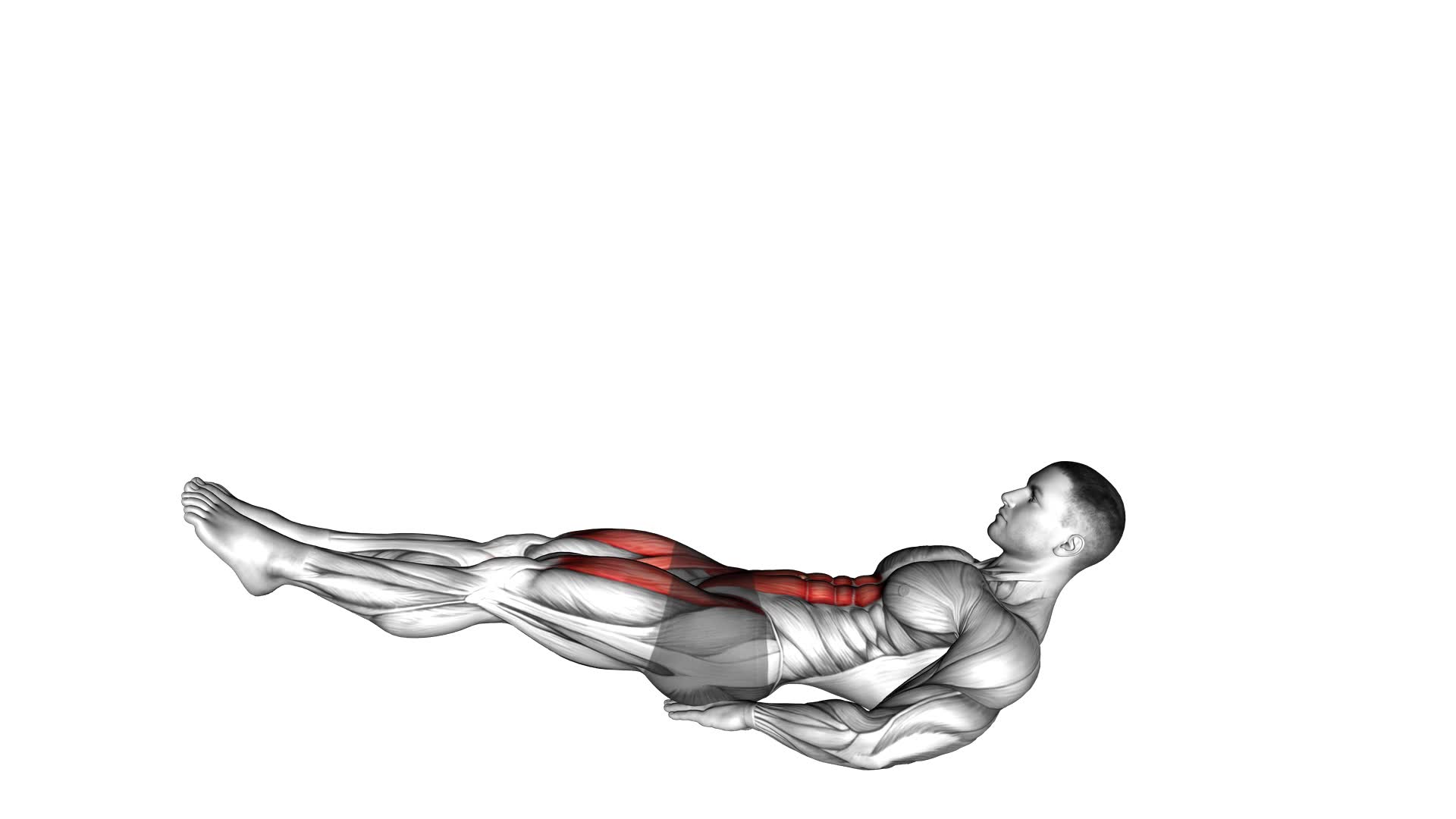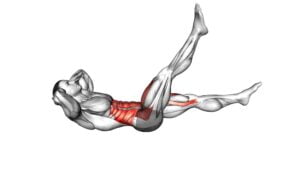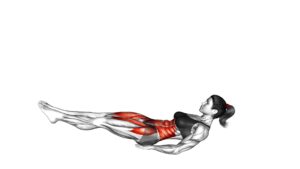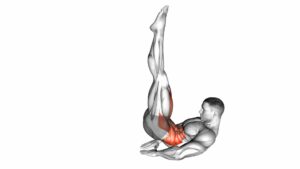Alternate Leg Raise With Head-Up – Video Exercise Guide & Tips

Are you looking for a quick and effective exercise to strengthen your core and improve your overall fitness? Look no further than the Alternate Leg Raise with Head-Up.
Watch This Exercise Video
In this video exercise guide, you’ll learn the benefits, proper form, and common mistakes to avoid. With easy-to-follow instructions and helpful tips, you’ll be able to maximize your results and achieve your fitness goals in no time.
So grab a mat and get ready to work those abs!
Key Takeaways
- Improved core strength and stability
- Targets abdominal muscles, lower back, and hip flexors
- Helps develop a stronger and more stable midsection
- Improves balance and coordination
Benefits of the Alternate Leg Raise With Head-Up
You can experience improved core strength and stability through the utilization of the alternate leg raise with head-up exercise. This exercise targets your abdominal muscles, lower back, and hip flexors, helping to strengthen and tone these areas. By engaging your core muscles, you can develop a stronger and more stable midsection, which is essential for maintaining proper posture and preventing injuries. Additionally, this exercise can improve your balance and coordination as you alternate lifting each leg.
One of the key benefits of the alternate leg raise with head-up exercise is its versatility. You can perform this exercise on a mat or on a stability ball to add an extra challenge. Another variation is to hold a dumbbell between your feet while lifting your legs, increasing the resistance and further engaging your core muscles.
Transitioning to the next section about equipment needed for the exercise, you’ll only require a mat or a stability ball to perform the alternate leg raise with head-up exercise. These items provide support and comfort as you perform the exercise, allowing you to focus on maintaining proper form and maximizing the benefits.
Equipment Needed for the Exercise
To perform the Alternate Leg Raise With Head-Up exercise, you’ll need a yoga mat or a comfortable surface to lie on. Using equipment like a stability ball or a bench can provide added support and challenge during the exercise.
It’s important to ensure the equipment is stable and in good condition to prevent accidents or injuries.
Required Exercise Equipment
Using the required exercise equipment for the Alternate Leg Raise With Head-Up involves using a mat or an exercise mat. These mats provide a comfortable and stable surface for performing the exercise.
The benefits of bodyweight exercises like the Alternate Leg Raise With Head-Up are that they can be done anywhere and anytime, without the need for expensive equipment or a gym membership.
However, if you don’t have access to a mat, there are alternatives to using equipment. You can perform the exercise on a carpeted floor or even on a towel or blanket. Just make sure that the surface is soft enough to provide some cushioning for your back and comfortable enough to support your body throughout the exercise.
Benefits of Using Equipment
The utilization of equipment enhances the effectiveness and efficiency of the exercise.
When it comes to resistance training, using exercise machines provides several benefits.
First, exercise machines allow you to target specific muscle groups with precision, ensuring that you’re working the intended muscles effectively. This targeted approach can help you achieve your fitness goals faster.
Second, exercise machines offer a controlled and stable environment, reducing the risk of injury compared to free weights or bodyweight exercises. Additionally, machines often provide adjustable resistance, allowing you to gradually increase the load as you become stronger. This progressive overload is essential for muscle growth and strength development.
By incorporating exercise machines into your workout routine, you can maximize the benefits of resistance training and achieve optimal results.
Now let’s move on to discussing the safety precautions when using equipment.
Safety Precautions When Using Equipment
Ensure proper equipment usage by following safety precautions.
To maintain the equipment’s functionality and longevity, it’s crucial to conduct regular equipment maintenance. This includes cleaning the equipment after each use, checking for any loose or damaged parts, and lubricating moving components as necessary.
By properly maintaining the equipment, you can minimize the risk of accidents or injuries during your exercise routine.
Additionally, it’s essential to ensure that you’re using the equipment as intended and in the correct manner. Always read and follow the manufacturer’s instructions and guidelines. This will help prevent injuries and ensure your safety.
Now that you understand the importance of equipment maintenance and safety precautions, let’s move on to discussing proper form and technique for the alternate leg raise with head-up exercise.
Proper Form and Technique
Lift each leg individually while keeping your head up for proper form and technique in the alternate leg raise exercise. Proper technique is crucial in order to maximize muscle activation and avoid injury.
To perform this exercise correctly, lie flat on your back with your legs extended and your arms by your sides. Lift one leg off the ground, keeping it straight and without bending your knee. As you raise your leg, engage your core muscles to maintain stability and control. Make sure to lift your leg as high as possible without straining or compromising your form. Slowly lower your leg back down to the starting position and repeat the movement with the other leg.
Remember to keep your head up throughout the exercise to maintain proper alignment and prevent unnecessary strain on your neck. By focusing on proper form and technique, you can effectively target your abdominal muscles and improve their strength and endurance.
Common Mistakes to Avoid
To avoid common mistakes, it’s important to frequently check your form and technique during the alternate leg raise exercise. Here are some technique tips to help you perform the exercise correctly and effectively:
- Lifting your head too high: Keep your head in a neutral position, aligned with your spine. Avoid lifting it too high, as this can strain your neck and take the focus away from your core and legs.
- Using momentum: Avoid swinging your legs or using momentum to lift them. Instead, engage your core muscles and use controlled movements to lift and lower your legs. This will help target the muscles more effectively and reduce the risk of injury.
- Bending your knees: Keep your legs straight throughout the exercise to fully engage your core and leg muscles. Bending your knees can decrease the challenge and effectiveness of the exercise.
- Lowering your legs too quickly: Maintain control as you lower your legs back down to the starting position. Avoid dropping them quickly, as this can strain your lower back. Control the movement and focus on engaging your core muscles throughout the entire exercise.
By following these technique tips and being mindful of common mistakes, you can maximize the benefits of the alternate leg raise exercise and achieve better results.
Remember to listen to your body and start with modifications if needed, gradually increasing the difficulty as your strength improves.
Modifications and Progressions
To enhance the effectiveness of the alternate leg raise exercise, it’s important to explore various modifications and progressions that challenge your core and leg muscles further. By making modifications and variations to the exercise, you can continue to challenge your body and prevent plateauing in your fitness journey.
One modification you can try is the weighted alternate leg raise. This involves holding a dumbbell or weighted plate between your feet while performing the exercise. The added weight increases the resistance and forces your muscles to work harder.
Another modification is the single-leg alternate leg raise. Instead of lifting both legs at the same time, you lift one leg while keeping the other leg extended and hovering above the ground. This variation puts more emphasis on the working leg and requires greater stabilization from your core muscles.
To progress the exercise, you can increase the number of repetitions or sets you perform. You can also increase the tempo or speed at which you perform the exercise, making it more challenging for your muscles.
Remember to listen to your body and progress at a pace that’s comfortable for you. By incorporating modifications and variations into your alternate leg raise exercise, you can continue to challenge your muscles and see continued progress in your fitness journey.
Tips for Maximizing Results
To maximize your results with the alternate leg raise with head-up exercise, it’s crucial to maintain proper form throughout the movement. This means keeping your core engaged, your back flat against the floor, and lifting your legs without using momentum.
Additionally, consistency is key for achieving the best results. Make sure to incorporate this exercise into your routine regularly and gradually increase the intensity to challenge your muscles and continuously progress.
Proper Form Importance
To maximize your results, it’s crucial to maintain proper form while performing the alternate leg raise with head-up exercise. Here are four tips to help you achieve the correct alignment and avoid common errors:
- Alignment is key: Make sure your body is in a straight line from head to toe. Avoid arching or rounding your back, as this can strain your lower back and diminish the effectiveness of the exercise.
- Engage your core: Keep your abdominal muscles tight throughout the movement. This will help stabilize your body and prevent unnecessary strain on your lower back.
- Control the movement: Slowly lift one leg at a time, focusing on using your hip flexor muscles. Avoid using momentum or swinging your legs, as this reduces the intensity of the exercise.
- Maintain proper head position: Keep your head aligned with your spine and avoid straining your neck. Look straight ahead or slightly upward to maintain proper form.
Consistency for Best Results
In order to maximize your results and achieve the best possible outcomes, it’s important to maintain consistency in your practice of the alternate leg raise with head-up exercise.
Maximizing consistency means performing the exercise regularly and sticking to a schedule. By doing so, you allow your muscles to adapt and strengthen over time. Consistency also ensures that you’re continually challenging your body, which leads to progress and improvement.
Additionally, it’s crucial to emphasize the importance of form while performing the alternate leg raise with head-up exercise. Proper form ensures that you’re targeting the correct muscles and minimizing the risk of injury. Pay attention to your body alignment, engage your core, and move in a controlled manner.
Frequently Asked Questions
How Many Repetitions and Sets Should I Do for the Alternate Leg Raise With Head-Up Exercise?
For the alternate leg raise with head-up exercise, the number of repetitions and sets you should do depends on your fitness level and goals.
As a general guideline, aim for 2-3 sets of 10-15 repetitions.
If you’re a beginner, start with fewer reps and sets and gradually increase as you get stronger.
Remember to listen to your body and modify the exercise if needed.
Can I Do the Alternate Leg Raise With Head-Up Exercise if I Have Lower Back Pain?
If you’re experiencing lower back pain, it’s important to modify the alternate leg raise exercise. There are modified versions that can help alleviate discomfort while still strengthening your core muscles.
Additionally, there are other exercises you can try to strengthen your core without aggravating your lower back pain.
It’s always a good idea to consult with a healthcare professional or a certified trainer to find the best exercises for your specific needs.
Is It Necessary to Lift My Head off the Ground During the Exercise, or Can I Keep It Resting on the Floor?
When doing the alternate leg raise with head up exercise, it’s necessary to lift your head off the ground. This helps engage your core muscles and maintain proper form. Lifting your head also activates your neck muscles, providing additional benefits.
However, if you have any neck or back pain, it’s important to modify the exercise. You can keep your head resting on the floor and focus on performing the leg raises with control and stability.
Can I Use Ankle Weights or Resistance Bands to Make the Exercise More Challenging?
Yes, you can definitely use ankle weights or resistance bands to make the exercise more challenging. Adding ankle weights will increase the resistance on your legs, making your muscles work harder and leading to greater strength and toning benefits.
Resistance bands, on the other hand, provide a different type of resistance that engages your muscles in a unique way, helping to improve stability and flexibility.
Both options can enhance the effectiveness of the exercise and take your workout to the next level.
Are There Any Variations of the Exercise That Target Different Muscle Groups?
Looking for different variations of this exercise to target different muscle groups?
There are a few options you can try.
One variation is the double leg raise, where you lift both legs off the ground at the same time. This targets your lower abs and hip flexors.
Another option is the side leg raise, where you lift one leg out to the side. This targets your outer thighs and glutes.
Give these variations a try to switch up your workout routine and target different muscles.
Conclusion
In conclusion, the alternate leg raise with head-up exercise is a valuable addition to any fitness routine.
It helps strengthen the core, improve balance, and target the abdominal muscles.
With the right equipment and proper form, you can maximize the benefits of this exercise.
Remember to avoid common mistakes, make modifications if needed, and follow the provided tips to achieve the best results.
Incorporating this exercise into your routine will contribute to overall strength and stability.

Author
Years ago, the spark of my life’s passion ignited in my mind the moment I stepped into the local gym for the first time. The inaugural bead of perspiration, the initial endeavor, the very first surge of endorphins, and a sense of pride that washed over me post-workout marked the beginning of my deep-seated interest in strength sports, fitness, and sports nutrition. This very curiosity blossomed rapidly into a profound fascination, propelling me to earn a Master’s degree in Physical Education from the Academy of Physical Education in Krakow, followed by a Sports Manager diploma from the Jagiellonian University. My journey of growth led me to gain more specialized qualifications, such as being a certified personal trainer with a focus on sports dietetics, a lifeguard, and an instructor for wellness and corrective gymnastics. Theoretical knowledge paired seamlessly with practical experience, reinforcing my belief that the transformation of individuals under my guidance was also a reflection of my personal growth. This belief holds true even today. Each day, I strive to push the boundaries and explore new realms. These realms gently elevate me to greater heights. The unique combination of passion for my field and the continuous quest for growth fuels my drive to break new ground.







